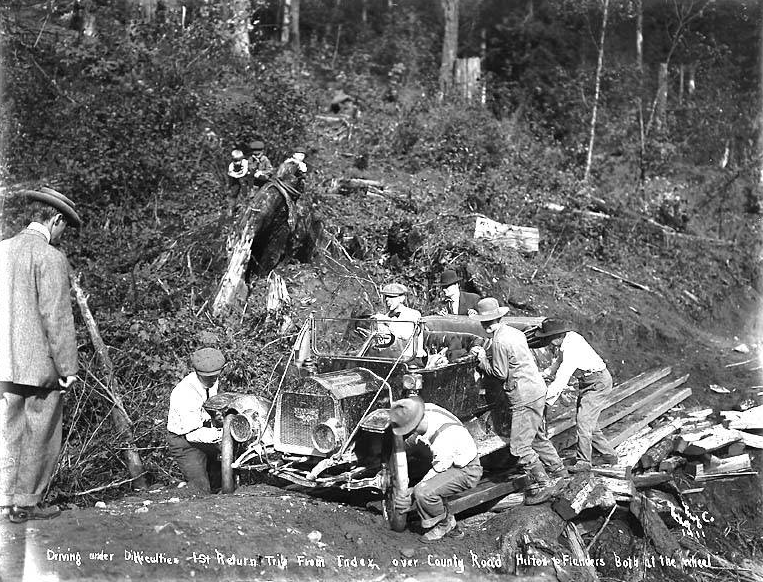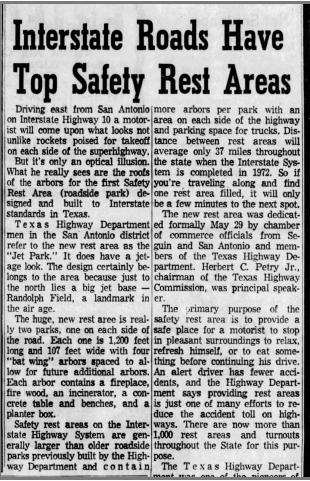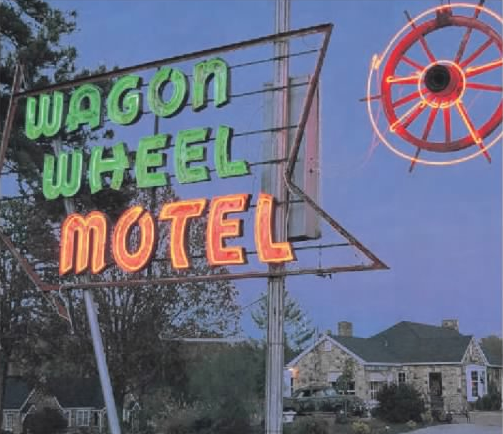Looking Back - The Federal-Aid Highway Act Signed: June 29, 1956
Special to The Auto Channel
By Jenny Ashcraft
Courtesy of Ancestry.com and Newspapers.com
On June 29, 1956, President Dwight D. Eisenhower signed the Federal-Aid Highway Act, also known as the National Interstate Defense Highways Act, creating a 41,000-mile system of interstate highways that would forever change travel in the country! The highways would make travel more efficient and create key routes to evacuate urban centers in the event of an atomic attack.

An interstate highway system was a far cry from the rutted dirt roads that existed when Henry Ford introduced the Model T in 1908. Wet weather presented a challenge for drivers, turning dirt roads into muddy quagmires. As the number of households that owned a car increased, so did the need for safe roads. Building roads was expensive and the costs were often covered by private companies that invested in the infrastructure in order to reap long term rewards.
While serving in the military, Eisenhower noted Germany’s smooth and efficient autobahn. Even though an interstate highway system had been discussed for years, it became one of Eisenhower’s top priorities after he was elected President. The highway system would allow citizens to travel quickly and efficiently in the event of a nuclear strike. It could also provide a network of highways to transport military troops and goods efficiently if needed. The federal government would pick up 90% of the tab and states would be responsible for 10%. The project would be financed with revenue from a federal gasoline tax. A statute prohibited commercial facilities along the new highways, so officials planned “safety rest areas,” or rest stops. Rest stops would provide motorists with clean bathrooms, water, and picnic areas and would be placed about every half hour along the highway. They were designed to offer a respite for weary travelers and sometimes offered a colorful glimpse into the history and traditions of the area.
As the interstate highways opened, some communities experienced a negative impact when cars bypassed their towns in favor of modern four-lane highways. Roads like the Lincoln Highway and Route 66, popular when driving was still an adventure, fell out of favor. Families opted for speed along the interstate rather than meandering along the old roads where colorful signs and local businesses services competed for travel dollars. In some cases, the interstate cut through the middle of towns and displaced citizens. However, the time-saving ease and convenience of travel using the interstate highway system propelled the project forward. By 1970, a person driving from New York to Los Angeles could complete the 2,830-mile drive 17 hours faster than in 1956.
To honor his memory, in 1990 a law passed changing the official name of the interstate freeway system to “The Dwight D. Eisenhower System of Interstate and Defense Highways.”
If you would like to learn more about the history of the interstate highway system including the 1956 Federal-Aid Highway Act and subsequent acts over the years, search Newspapers.com today!
For more stories written by Jenny Ashcraft CLICK HERE





